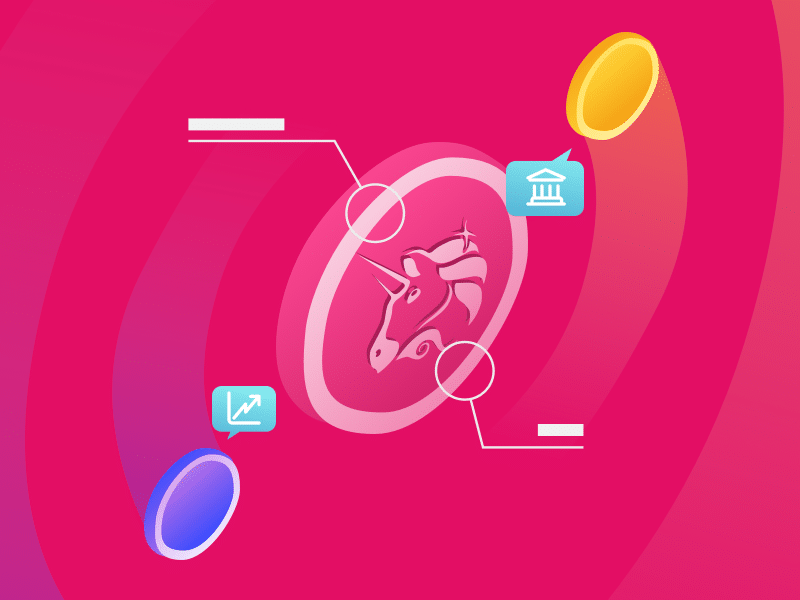Bitcoin’s Lightning Network: Enhancing Bitcoin Transactions with Speed, Efficiency, and Affordability
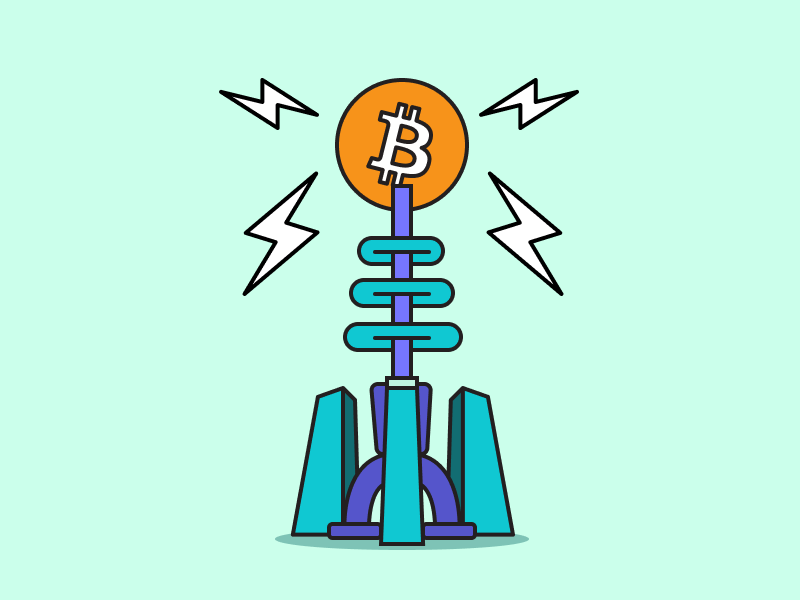
El Salvador’s historic adoption of Bitcoin as legal tender highlights the significance of the Lightning Network. By leveraging the Lightning Network, Bitcoin transactions, including BTC transfers and merchant payments, have gained notable speed and cost-effectiveness. This article delves into the technology of Lightning Network, and how it simplifies the daily Bitcoin transactions for users.
Article Summary
- ⚡ Lightning Network is a second-layer payment protocol on top of the Bitcoin blockchain network that speeds up and saves transaction fees.
- ⛓️ Lightning Network solves Bitcoin’s scalability problem of limited transactions per second (TPS) by enabling small Bitcoin transactions through off-chain payment channels.
- 🇸🇻 Deployed in El Salvador, where Bitcoin is legal tender, Lightning Network enables nearly fee-free transactions for citizens.
- 🪄 The recent innovation, Taproot Assets, revolutionizes the Bitcoin network, allowing the issuance of stablecoins and Real World Assets directly through the Lightning Network.
What is Bitcoin Lightning Network?
Lightning Network Bitcoin is a second-layer payment protocol that operates on top of the Bitcoin blockchain. This network enhances the speed and efficiency of Bitcoin transactions.
Bitcoin uses blockchain technology designed to increase the security of digital asset transfers. Due to the focus on security, the number of transactions per second (TPS) on the Bitcoin blockchain network is limited and relatively low. However, as the number of transactions on the Bitcoin blockchain grows, this limitation may become an obstacle that needs to be overcome for Bitcoin’s sustained growth.
The Bitcoin Lightning Network is a solution to Bitcoin’s scalability issues. Smart contracts allow the Bitcoin Lightning Network to make transactions faster and more efficient without compromising Bitcoin’s decentralization and security. Lightning Network offers instant and cost-effective transactions.
How the Lightning Network Concept Started
Bitcoin’s scalability or ability to process large-scale transactions is currently an issue. Bitcoin transactions are limited to 7 transactions per second with a block size of 1 megabyte, while payment companies like Visa can process 4,000 transactions per second and can scale up to 65,000 transactions per second.
Bitcoin block size is limited to 1 megabyte. It was decided to maintain the security of the Bitcoin network. The larger the block size, the longer it will take to verify transactions. However, confirming transactions will be longer and more expensive because the block quota is only limited to 1 megabyte. It is because users compete to have their transactions included in the next block.
Because of this scalability problem, Bitcoin experienced a fork or blockchain splitting: Bitcoin and Bitcoin Cash. Bitcoin Cash increases the block size to process more transactions.
Read more about Bitcoin Cash in the article What is Bitcoin Cash ?
The Lightning Network was created to overcome this issue on the Bitcoin blockchain. It enables the execution of small transactions by opening a payment channel outside the Bitcoin network (off-chain). And these transactions are only incorporated into the blockchain upon verification and closure of the payment channel.
The Lightning Network addresses two problems with Bitcoin transactions: speed and cost.
Bitcoin transactions take approximately 10 minutes per confirmation. Due to its decentralized nature, Bitcoin transactions require consensus from the entire network of nodes spread across the globe, thus taking longer.
Bitcoin's Lightning Network can process up to 1,000,000 transactions per second (TPS), Bitcoin can only process about 7 TPS, and Visa can manage thousands of TPS.
How does the Lightning Network work?
There are two nodes on the Lightning Network: the Bitcoin nodes and the Lightning Network nodes. Nodes are computers or people that run the Bitcoin program and monitor Bitcoin transactions.
The difference between Bitcoin nodes and Lightning Network nodes is that Bitcoin nodes must verify every transaction on the Bitcoin network. While Lightning Network nodes must check the validity of transactions they directly interact with.
Each Lightning Network node has a Lightning wallet, where the operator must deposit/top-up BTC into the Lightning wallet. So to open a payment channel, users must deposit a certain amount of BTC into the payment channel. Lightning Network is currently only suitable for making small BTC transactions.
Lightning Network uses a technology called source routing and onion routing. When a Lightning transaction is sent, the computer will calculate the optimal route based on the current network status. Then, the protocol will encrypt the route to make it secure.
Implementation of Bitcoin Lightning Network
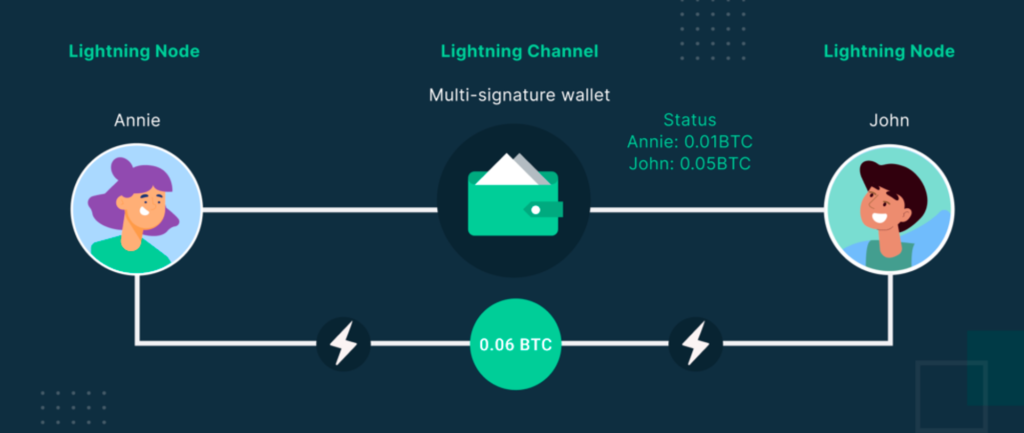
To use the Bitcoin Lightning Network, you can download wallets that support the Lightning Network, such as Phoenix Wallet, Breez Wallet, Wallet of Satoshi, Blink Wallet, and others. After that, you can deposit BTC and then make a transaction.
For example, Ari wants to send BTC to Budi using Lightning Network. Both of them have wallets that support the Lightning Network, which is also connected to the Lightning network. To get started, Ari must deposit BTC into his Lightning wallet.
Ari needs to cover a blockchain transaction fee for topping up his Lightning wallet. After Ari’s Lightning wallet is funded, he can request Budi to initiate a payment channel. Budi might request Ari to send a specific amount of Satoshi and provide an “invoice” to Ari.
This invoice contains information on how many Satoshi Budi wants to receive and Budi’s Lightning wallet address. After Ari sends Satoshi to Budi, Budi will receive Satoshi instantly in his Lightning wallet. Budi can close the channel and put Satoshi into Budi’s Bitcoin wallet via the blockchain. When Budi closes the Lightning channel, Budi also pays the Bitcoin transaction to the miner.
Budi can close the Lightning channel (settlement) or keep Satoshi in the Lightning wallet. So when Budi wants to return Satoshi to Ari, they can immediately do it the same way until one of them closes this payment channel.
Lightning Network uses Satoshi in sending Bitcoin because Satoshi is the smallest form of Bitcoin. One Bitcoin is equivalent to 100 million Satoshis. Satoshis in Lightning Network allows transactions on a very small scale so that users can send and receive very small amounts of Bitcoin at a low cost.
How Much Does A Lightning Network Transaction Cost?
Lightning Network transactions can be done in less than 1 second at no cost. This is because the transaction only exchanges information in the payment channel, so the transaction fee is almost free.
Users will pay a transaction fee when the payment channel is closed, and the transaction is added to the blockchain. The fee will be paid according to the Bitcoin blockchain transaction fee at that time.
Lightning Network’s Performance on Bitcoin Adoption Growth
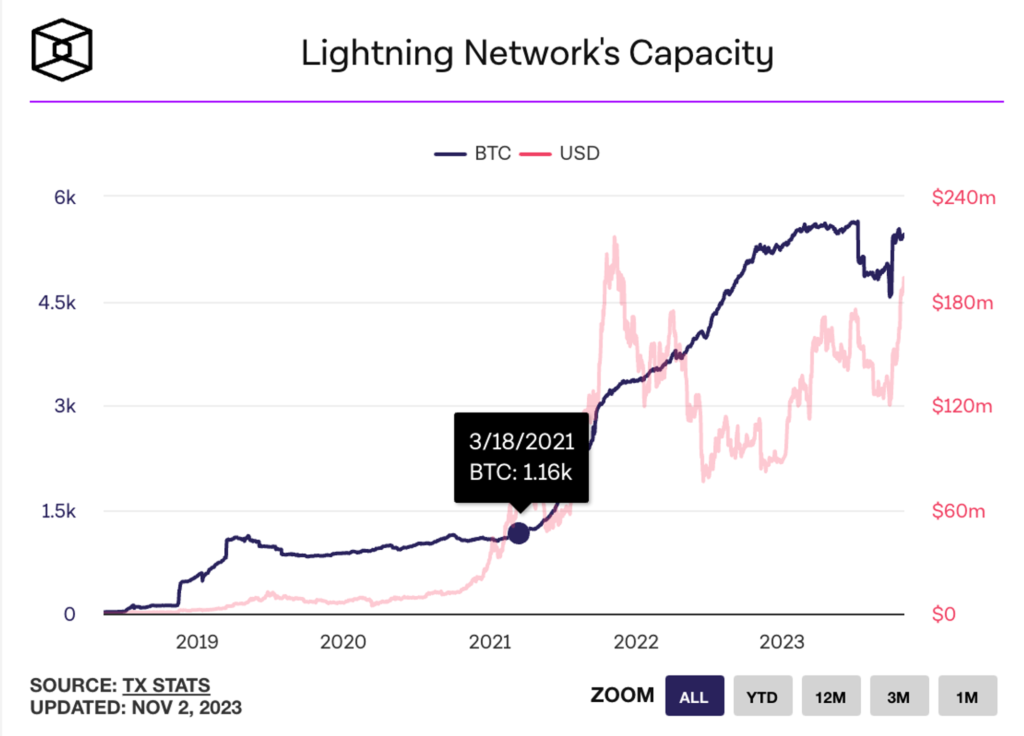
The capacity of the Lightning Network in 2021 still amounted to over 1,000 BTC. However, its capacity has increased to more than 5,000 BTC on November 2, 2023. This shows the high scalability of the Bitcoin network as a payment system.
According to a report from River, a Bitcoin technology and financial services company, as of September 2023, there were between 279,000 – 1.116 million active Lightning users every month. River also reported that the average size of a Lightning transaction on the public network was about 44,700 Satoshis, or 11.84 US dollars in August 2023.
Lightning Network Implementation in El Salvador
The citizens of El Salvador heavily utilize the Lightning Network, a factor that influenced their decision to embrace Bitcoin as legal tender. They engage in Bitcoin transactions using the Strike Wallet and Bitcoin Beach Wallet.
With the Lightning Network, Salvadorans effortlessly buy and sell goods at minimal costs. Those residing outside the country can also send money (remittances), enjoying more affordable rates compared to services like Western Union
Taproot Asset on Lightning Network
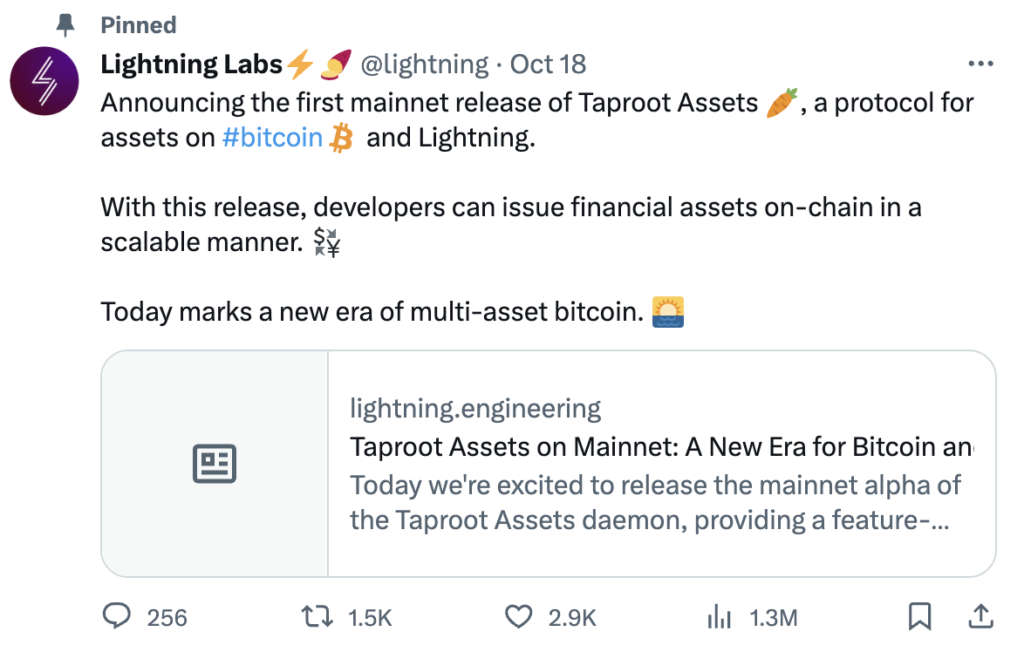
The recent upgrade to the Lightning Network, the Taproot Assets protocol introduced on October 18, 2023, stands out as a significant enhancement, bringing transformative changes to the Bitcoin ecosystem. This protocol not only boosts the network’s capacity and scalability but also positions Bitcoin as a more extensive multi-asset network.
Taproot Assets empower Bitcoin users to create stablecoins and Real World Assets, including fiat currency, gold, or government bonds, directly on the Bitcoin blockchain. This expands Bitcoin’s utility beyond sending and receiving Bitcoin to serving as a platform for diverse digital asset creation and management.
Taproot Assets are even more interesting because the transactions associated with these assets do not overload the main Bitcoin blockchain. Instead, they occur outside of the main blockchain through the Lightning Network. It means that Bitcoin will not be affected by possible network congestion that could arise due to increased activity.
Buying Crypto on Pintu App
You can invest in crypto assets such as BTC, ETH, SOL, and others without worrying about fraud on Pintu. In addition, all crypto assets on Pintu have passed a rigorous assessment process and prioritize the principle of prudence.
The Pintu application is compatible with various popular digital wallets, such as Metamask, to facilitate transactions. Download the Pintu app on the Play Store and App Store! Your safety is guaranteed because Pintu is regulated and supervised by Bappebti and Kominfo.
In addition to making transactions on the Pintu app, you can learn more about crypto through various Pintu Academy articles that are updated weekly! All Pintu Academy articles are created for educational and knowledge purposes, not as financial advice.
References
- Bitcoin.com Team, What is Lightning Network? Bitcoin.com, accessed 2 November 2023.
- River Team, Reserach Report: The Lightning Network Grew by 1212% in 2 Years, River, accessed 2 November 2023.
- Jullie-Anne Chong, 8 Best Bitcoin Lightning Wallets 2024: Top LN Wallets Compared! Coinbureau, accessed 2 November 2023.
Share
Table of contents
Related Article
See Assets in This Article
BCH Price (24 Hours)
Market Capitalization
-
Global Volume (24 Hours)
-
Circulating Supply
-

